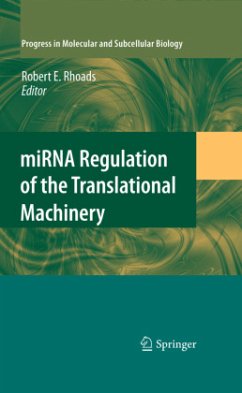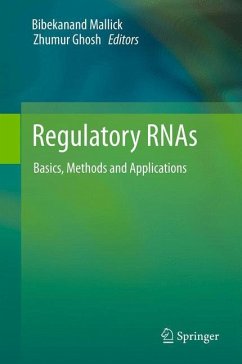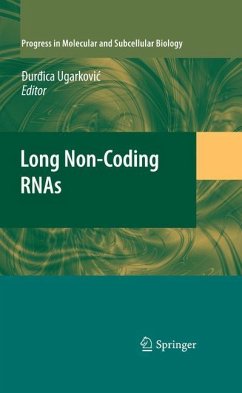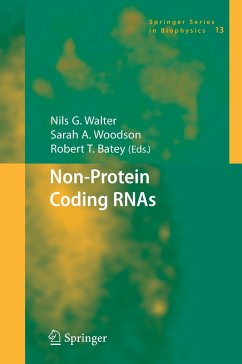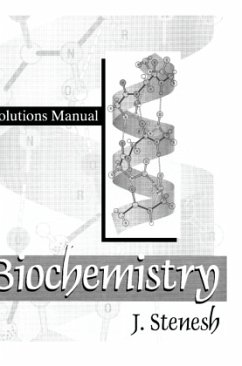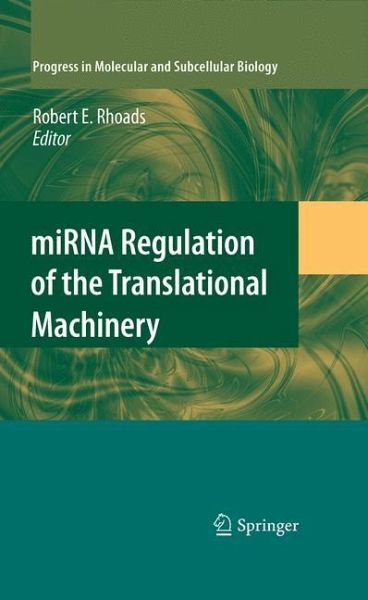
miRNA Regulation of the Translational Machinery
Versandkostenfrei!
Versandfertig in 6-10 Tagen
76,99 €
inkl. MwSt.

PAYBACK Punkte
38 °P sammeln!
The silencing of gene expression by small interfering RNAs has been recognized for only a relatively short time, but this has transformed our understanding of both transcriptional and post-transcriptional gene regulatory mechanisms. Multiple pathways culminate in formation of an RNA-induced silencing complex (RISC) containing a member of the Argonaute protein family bound to a 22-nt RNA strand that interacts with a target mRNA or gene through Watson-Crick base pairing. One consequence is mRNA-specific inhibition of protein synthesis. Evidence has been presented for diverse mechanisms, but ther...
The silencing of gene expression by small interfering RNAs has been recognized for only a relatively short time, but this has transformed our understanding of both transcriptional and post-transcriptional gene regulatory mechanisms. Multiple pathways culminate in formation of an RNA-induced silencing complex (RISC) containing a member of the Argonaute protein family bound to a 22-nt RNA strand that interacts with a target mRNA or gene through Watson-Crick base pairing. One consequence is mRNA-specific inhibition of protein synthesis. Evidence has been presented for diverse mechanisms, but there is not universal agreement in the field of how RISCs affect the translational machinery. The chapters collected in this volume represent contribution by leaders in the search to understand how miRNAs affect translation. They include chapters representing work in plants and Caenorhabditis elegans, the biological systems that originally led to the discovery of small interfering RNAs, butalso include chapters on mammalian systems, with special emphasis on regulation of a key tumor suppressor and a protein that restricts human immunodeficiency virus 1 (HIV-1).





